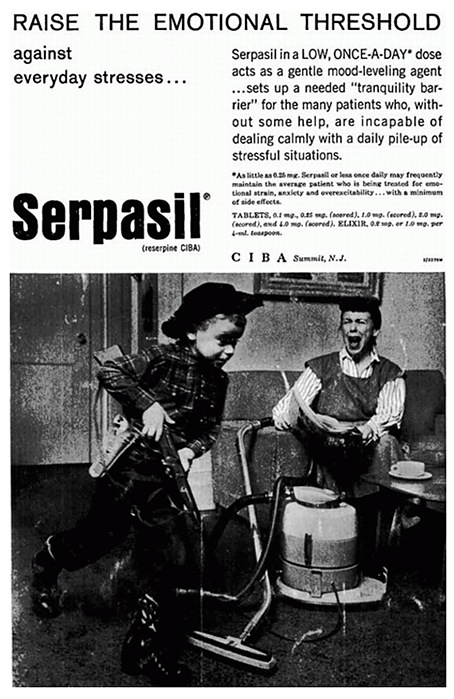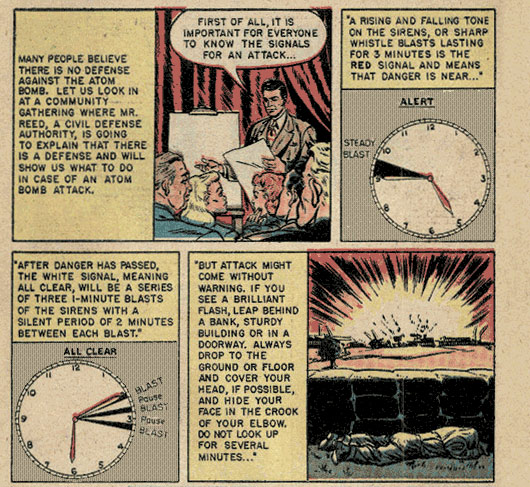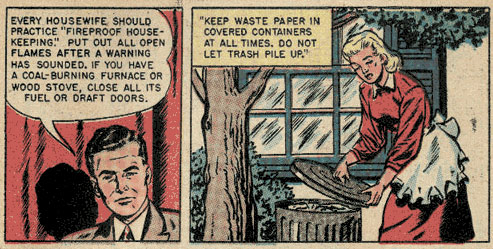The Religious Right And World Vision's "Charitable" Evangelism
by Michael Barker
"We analyse every project, every programme we undertake, to make sure that within that programme evangelism is a significant component. We cannot feed individuals and then let them go to hell."
—Ted Engstrom (former president of World Vision International) (1)
(Swans - December 28, 2009) Government organized foreign aid has long served as a vital means by which elite policymakers have cynically maintained a disparity of wealth between nations while simultaneously professing to do the opposite. In the United States, the major distributor of such "aid" is the US Agency for International Development (USAID), which presently has an annual budget in excess of $20 billion. Andrew Natsios, the former World Vision vice president, who has also served as the head of USAID (2001-05), demonstrated the manipulative nature of such large sums of money when he publicly acknowledged that he considers US-based organizations supported by this Agency to be "an arm of the U.S. government." It is however more normal for officials distributing such geostrategic funding to emphasize the apolitical nature of such monies. The mainstream media does little to challenge this myth and regularly plays up the altruistic intentions of the government. Unfortunately, this means that in recent years a large proportion of the US public has believed that foreign aid was one of the two largest items in the federal budget, even though "less than 0.5 percent of the budget went for anything remotely resembling foreign aid."
Despite their overestimation of their own government's altruism, the private philanthropy of many US citizens -- like those from many other wealthy countries -- is high. For example, according to the Giving USA Foundation, in 2005 "Americans gave away more than $260 billion to thousands of charities, philanthropies, churches, disaster relief funds, and myriad other do-good projects." This suggests that that if a sizable proportion of this money could be diverted to groups that addressed some of the root causes of injustice, the public alone could make a significant dent (independent of their government's own actions) in counteracting the influence of ruling elites. At present though, this is not the case, and most public donations are distributed (in good faith) to support charitable organizations that already obtain strong support from the US government. In part such public funding of elitist groups owes much to the fact that such organizations maintain favourable profiles in the mainstream media, and are also able to engage in expensive and sophisticated publicity campaigns to garner public support. World Vision is just one such group, and this article examines their historical ties to US foreign policy elites and New Right religious activists to demonstrate why buying a World Vision present for a loved one is not quite all it is cracked up to be.
World Vision's Cold Warriors
According to their Web Site, "World Vision began with the vision of one man -- the Reverend Bob Pierce" who, when on a trip to China in 1947, felt compelled to sponsor the upbringing of a "battered and abandoned" child named White Jade. Reverend Pierce then "began building an organisation dedicated to helping the world's children, and in 1950 World Vision was born." World Vision now works with children from all over the world, but their "first child sponsorship programme" was launched in 1953 "in response to the needs of hundreds of thousands of orphans at the end of the Korean War." The initial focus of World Vision's activities is particularly noteworthy because of the integral role that the Korean War fulfilled in the history of US militarism. (2)
Although not mentioned on World Vision's official "History" page, since 1947 Reverend Pierce had been a full-time travelling evangelist for the Youth for Christ movement -- an organization born in the mid-1940s -- which shortly took Pierce "to Asia to evangelize American servicemen." So it is intriguing that David Stoll observes that World Vision "was a product of the Cold War"; noting that one of Reverend Pierce's first overseas campaigns was in China, "where Youth for Christ hoped that evangelical Christianity would stiffen the resistance to communist advance." (3) Conceived as a bulwark against communism, World Vision's work in Vietnam and Cambodia was "heavily subsidized by USAID, [which] rais[ed] understandable fears about its objectives." (4)
In her book Spiritual Warfare: The Politics of the Christian Right (South End Press, 1989), Sara Diamond writes of the "disastrous implications" of the "unchecked intervention in the culture and political economy of Third World communities" as manifested in the "escalation of Christian Right missionary relief and development work, [which is] increasingly organized in such a way as to attract both more participants and more grant money from the U.S. Agency for International Development (AID)." (5) Greg Grandin concurs with this analysis, observing how during the 1980s: "In order to bypass public and Congressional opposition, the White House outsourced the 'hearts and minds' component of its Central American wars to evangelicals." This war on people's minds is clearly a massive growth industry and the U.S. evangelical missionary project now "has an annual income of two billion dollars, equivalent to one fifth of aid transferred by [nongovernmental organizations] worldwide." (6) Given such well-funded trends, it is not surprising that in Ecuador (as reported in 1981) the Catholic human rights organization Pax Christi denounced World Vision as a "Trojan Horse" for US foreign policy. (7) Thus as Stoll writes:
One of the first things Ecuadorians noticed about World Vision was the discrepancy between what it said and what it did. Although the group described itself as Christian, not evangelical, it was channeling its help exclusively through evangelicals. Instead of working through the cabildo -- the elected council in Quichua villages -- it was bypassing them and turning its funds over to evangelical leaders. The ensuing quarrels were breaking up mingas, the communal workdays in Quichua culture.
Ecuadorians were still debating a similar discrepancy in the work of the Summer Institute of Linguistics. Despite claims to be a non-sectarian scientific organization, it had turned out to be an evangelical mission. Now that SIL had lost its government contract, Ecuadorian opponents suspected that World Vision had inherited the same objectives. It was as if the whole operation was calculated to sharpen conflicts between Catholics and Protestants, divide communities, and make it harder for peasants to fight for their rights. (p.289)
Billy Graham's Evangelical World Vision
To gain a little insight into the controversial nature of World Vision's humanitarian forays it is important to examine the influence of Youth for Christ's first full-time employee, the Reverend Billy Graham. Graham is an integral character in the global evangelical project, and the former president of World Vision International, W. Stanley Mooneyham (1969-82), had prior to taking up this appointment served as Graham's personal assistant, and then as vice president of international relations for the Billy Graham Evangelistic Association. Indeed, World Vision provides an excellent example of the philosophy of new evangelicalism in practice, and their work responds to the National Association of Evangelicals' call "for the application of Christianity to every aspect of life including the social." (8) Here of course it is vital to note that Graham played an important role in "leading the way" at the National Association of Evangelicals, ensuring that new evangelicalism was rapidly "transformed from a small group of denominational leaders into a national movement." (9) Furthermore, Graham's ties to World Vision continue through his son, Franklin Graham, as when Pierce was forced to resign from his position as World Vision's president in 1967, he founded a new organization, Samaritan's Purse, and Franklin "became Pierce's protégé"; then when Pierce died in 1978, the young Graham became Samaritan Purse's new president (a position he maintains to this day).
While Billy Graham is largely heralded by the mainstream media as an apolitical crusader for justice, this myth has been utterly dispelled by investigative journalist Cecil Bothwell. Indeed, Bothwell concludes his book-length review of Graham's life by surmising: "In every way, Graham was the spiritual father of today's right-wing religious leaders who inject themselves into the realm of politics." Bothwell adds: "More than any other public figure in our history, Graham undermined the Founders' sceptical deism and sought to rebrand the United States as a Christian nation, its armies the rightful instruments of Christian crusade and empire." (10) So while in the past Graham's evangelical career has been associated with moderate evangelism, in actual fact his pragmatic approach quickly brought him into close alliances with more conservative forces. Bearing this in mind it is appropriate that the well-known funder of the Religious Right, the Arthur S. DeMoss Foundation, has been a major supporter of Graham's son's group, Samaritan Purse, as well as funding the work of other conservative groups like Campus Crusade for Christ (whose founders included Billy Graham; see later) and Servant Group International.
One reason so few people are aware of Graham's conservative pedigree is not least the support he has gained from the mass media. From his early days as an evangelist with Youth for Christ he had the backing of the strongly anti-communist Hearst media empire. Moreover, Graham's ability to harness the arts of "Madison Avenue" in the service of evangelism also helped ensure that he received the backing of "the hierarchy of New York's mainline Protestant denominations." As Gerard Colby and Charlotte Dennett recount in their book, Thy Will Be Done, the Conquest of the Amazon: Nelson Rockefeller and Evangelism in the Age of Oil (HarperCollins, 1995), in the 1950s:
A vision of global missions persuaded [John D. Rockefeller] junior to OK a $50,000 donation. It was done quietly, without press releases or fanfare, a secret affirmation that helped make the New York Crusade "a turning point in Graham's American ministry." It also was a turning point for Fundamentalism, ending its isolation on the fringe of American religious life and giving the movement the second wind it needed to make its postwar revival a durable mass phenomenon.
[...]
Billy Graham's enormous success with Manhattan's business elite in 1957 signified that the U.S. Christian Fundamentalist movement, like the United States herself, was at the edge of a major transition. Graham's organization gave the movement a new corporate cohesiveness; his moderate evangelizing of modernist Protestants set the tone for the movement's future success. This success, in turn, fed upon a United States that was in cultural discontinuity with the old order. In the 1950s, the era of small-business ethics finally gave way in mainstream America to the march of the modern corporation and its big-business ethic of efficiency and conformity within a mass culture. (p.294) (11)
In addition to these excellent elite connections, Graham created his own evangelical media empire to further consolidate his views in the popular consciousness of US citizens, and one small but significant publication in this regard was Christianity Today. Founded in 1956 with the financial support of J. Howard Pew (of Pew Charitable Trusts fame), Christianity Today's founding executive director was Graham's father-in-law, L. Nelson Bell, who served in this position until his death in 1973. Here it is important to recognize that when Graham began dating L. Nelson Bell's daughter (and his future wife) Ruth McCue Bell in the 1940s her father was considered to be "one of the most powerful men in the Christian missionary world." Later in the 1960s, L. Nelson Bell even served as the head of the Asheville chapter of the radical anti-communist witch-hunters, the John Birch Society. (12)
Bible Translators, and the Vision (for a New Right) World
Long-time John Birch Society supporter Nelson Bunker Hunt (a man "not known for his scruples... own[ing] oil and gas leases all over the world") (13) can at this point be indirectly connected to Graham through the controversial Wycliffe Bible Translators -- an organization that works closely with the aforementioned Summer Institute of Linguistics. (14) This is because Graham served on Wycliffe's board of directors "from about 1958 until 1961," while some time later Hunt acted as a trustee of the Wycliffe Bible Translators' "largest undertaking to date, the International Linguistic Center." (15) Although Graham left Wycliffe's board because of a "dispute over the founder's fundraising tactics," his Billy Graham Evangelistic Association "continued to provide funds to Wycliffe well into the 21st Century." (16) Given these links it is fitting that just prior to his death in 1982, Wycliffe Bible Translators' founder, Cameron Townsend, was...
... listed as one of several dozen Christian leaders in the Religious Roundtable, a New Right vehicle "to fight in the political arena for pro-God, pro-family, pro-American causes." The Roundtable was organized in 1979 by a former Wycliffe Associates board member, E.E. McAteer, who had just introduced a flag and Bible entrepreneur named Jerry Falwell to his associates in Washington, thereby helping to launch the Moral Majority. (17)
Here it is important to pause to examine the organizations that eventually evolved into the Religious Roundtable, as the...
... first major effort to build a national movement of conservative evangelicals came in 1974. Arizona Congressman John Conlan and Bill Bright, president and founder of Campus Crusade for Christ, devised a plan to politicize and educate people in every Congressional district who would become part of a national grassroots effort to elect evangelical Christians sharing a conservative political agenda. At the center of their plan was Third Century Publishers, organized in 1974 to publish books and other materials promoting a conservative political and economic philosophy based on scriptural principles. Its chief publication was One Nation Under God by Rus Walton, intended for use in the study of "Christian economics." In addition to his post as editor-in-chief of Third Century, Walton was a director of the National Association of Manufacturers and the American Conservative Union. (18)
In the same year John Conlan and Bill Bright created the soon to be defunct Christian Embassy, an organization whose board included "religious leaders such as Billy Graham, W. A. Criswell, Norman Vincent Peale, and Harold Lindsell of Christianity Today." (19) Graham was a "long-time friend" of Bright, and upon his death in 2003, he commented: "He is a man whose sincerity and integrity and devotion to our Lord have been an inspiration and a blessing to me ever since the early days of my ministry."
Bright is best known for founding the Campus Crusade for Christ in 1951 with the help of Billy Graham amongst others -- an organization Bright had led until 2000 when he passed the reigns of the Crusade over to Steve Douglass (who presently leads the organization along with the associated Campus Crusade for Christ International). Not surprisingly, given the conservative nature of this organization, the right-wing philanthropist Nelson Bunker Hunt rears his head again, as he served as the past chairman of the executive committee of Campus Crusade for Christ International's Here's Life Campaign, and funded the production of Bright's world-famous Jesus film (1979). In 1994 Bright went on to co-found the right-wing Alliance Defense Fund with Larry Burkett (amongst others), (20) an individual who just over a decade earlier had founded the National Christian Foundation with Terry Parker (an individual who went on to serve as a board member of the neoconservative Family Research Council), and Ron Blue (who is presently a board member of Campus Crusade for Christ International). (21)
Returning to the conservative Wycliffe Bible Translators, to this day Wycliffe's work remains connected to World Vision luminaries. For example, Wycliffe board member Atul Tandon is the senior vice president of donor engagement for World Vision U.S. Furthermore, Wycliffe board member, and author of The U.S. Military/NGO Relationship in Humanitarian Interventions (US Army Peacekeeping Institute, 1996) Chris Seiple is the son of the former long-serving president of World Vision U.S., Robert Seiple (1987-98). (22) Like his father, Chris is intimately enmeshed within powerful elite networks and he is a senior fellow at the neoconservative Foreign Policy Research Institute, (23) a member of the International Institute for Strategic Studies (London), (24) and serves as the president of the Institute for Global Engagement (which was co-founded by his father). (25)
The current chair of the Wycliffe Bible Translators' fourteen-person-strong board of directors is former World Vision International board member Brady Anderson. Prior to becoming the US Ambassador to Tanzania (1994-7), Anderson had spent six years working with Summer Institute of Linguistics (in Kenya, Ethiopia and Tanzania), and after vacating his post as the US Ambassador to Tanzania, he served for two years as the USAID administrator (1999-2001). (26) In 2001 Anderson was succeeded at USAID by Andrew Natsios, an individual who had previously served as a vice president of World Vision (from 1993 until 1998). As if this evidence of the intimate relations maintained between World Vision and the US government were not enough, in an interview conducted in 2004 Anderson observed how World Vision had been "the largest handler of food in the world, and almost all the food was donated by the U.S. government." (pdf) An important point given that the US government does not donate food out of generosity; rather their food distribution networks are considered to be an integral weapon through which to promote their geostrategic interests. (27)
The affiliations of another Wycliffe board member, Tom Lin, further serve to expand our understanding of the type of work being undertaken by World Vision, as he is presently the regional director (central US) of the InterVarsity Christian Fellowship -- an "evangelical campus mission" that was formed in 1941. Again the Fellowship is directly connected to right-wing elites, as their Internet editor and media coordinator, Gordon Govier, is the secretary of the arch-conservative organization Gegrapha. (28) Incidentally, World Vision's former events and communications director T. Diane Bryhn was appointed (in 2003) to be Gegrapha's first executive director. (29) World Vision also maintains direct connections to the Fellowship as the latter's board of trustees includes Dolphus Weary, who is a former board member of World Vision U.S., and the former president of the Fellowship, Stephen Hayner, is a board member of both World Vision International and the International Justice Mission. (30)
Finally, considering the longstanding allegations that global evangelism has served the foreign policy interests of the US government and their allied mining corporations, it is fitting that Kevin Jenkins, the new head of World Vision International, is a board member of the Canadian-based global energy company Nexen, a corporation that is involved in the highly destructive mining of Canada's tar sands on the land of Canada's First Nations people.
Continues at: http://www.swans.com/library/art15/barker39.html











